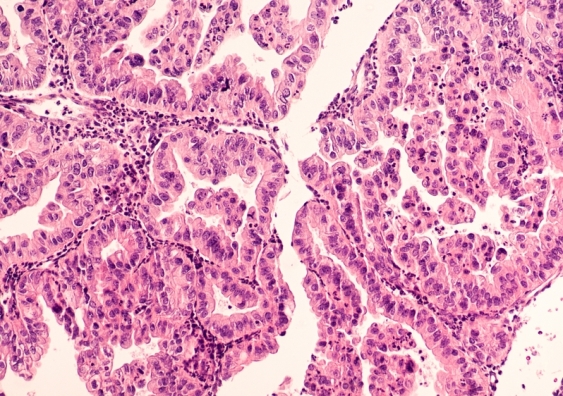A group of international cancer researchers led by the US Mayo Clinic and UNSW Sydney have found that the level of a type of white blood cell, called tumour infiltrating lymphocytes (TILs), present in the tumours of patients with high-grade ovarian cancer, may predict their survival.
Results of the study by the Ovarian Tumour Tissue Analysis (OTTA) Consortium were published today in JAMA Oncology.
Each year about 1,500 Australian women are diagnosed with ovarian cancer. The five-year survival rate for Australian women is 43%, compared to 90% for breast cancer.
Researchers found that patients with high-grade ovarian cancer showed the most infiltration with TILs, which were associated with longer overall survival.
“We know that a type of TIL called Cytotoxic CD8 are present in the tumours of patients with high-grade ovarian cancer,” says Matthew Block, M.D., Ph.D. an oncologist at Mayo Clinic who co-led the research team with Ellen Goode PhD of the Mayo Cancer Center’s Genetic Epidemiology and Risk Assessment Program.
“However, little was known about the role in fighting high-grade ovarian cancer compared to other clinical factors.”
To help answer this question, researchers studied more than 5,500 patients from nine different countries, including 3,196 with high-grade ovarian cancer.
“This is the by far the largest study of this type and would not have been possible without scientists and doctors from North and South America, Europe and Australia all working together,” said Professor Susan Ramus from UNSW Sydney. “Almost 300 patients from Australia participated in this project.”
The study shows the higher the level of CD8 TILs in a tumour the better the survival for patients with high-grade ovarian cancer, says Dr Block.
“Developing a better understanding of factors that increase CD 8 TILs will be the key to developing treatments to achieve better outcomes in treating patients with high-grade ovarian cancer.”


